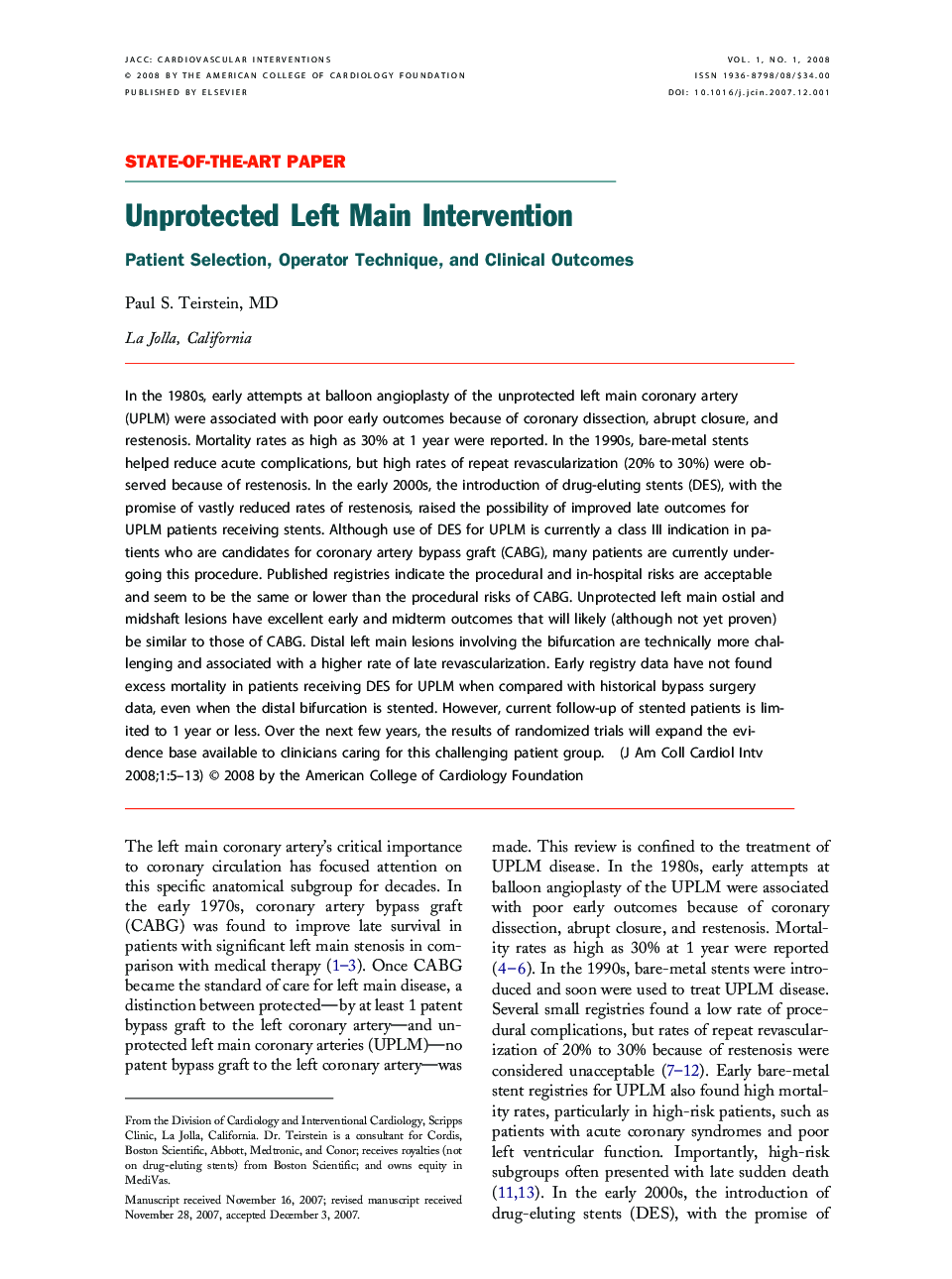| Article ID | Journal | Published Year | Pages | File Type |
|---|---|---|---|---|
| 2941931 | JACC: Cardiovascular Interventions | 2008 | 9 Pages |
Abstract
In the 1980s, early attempts at balloon angioplasty of the unprotected left main coronary artery (UPLM) were associated with poor early outcomes because of coronary dissection, abrupt closure, and restenosis. Mortality rates as high as 30% at 1 year were reported. In the 1990s, bare-metal stents helped reduce acute complications, but high rates of repeat revascularization (20% to 30%) were observed because of restenosis. In the early 2000s, the introduction of drug-eluting stents (DES), with the promise of vastly reduced rates of restenosis, raised the possibility of improved late outcomes for UPLM patients receiving stents. Although use of DES for UPLM is currently a class III indication in patients who are candidates for coronary artery bypass graft (CABG), many patients are currently undergoing this procedure. Published registries indicate the procedural and in-hospital risks are acceptable and seem to be the same or lower than the procedural risks of CABG. Unprotected left main ostial and midshaft lesions have excellent early and midterm outcomes that will likely (although not yet proven) be similar to those of CABG. Distal left main lesions involving the bifurcation are technically more challenging and associated with a higher rate of late revascularization. Early registry data have not found excess mortality in patients receiving DES for UPLM when compared with historical bypass surgery data, even when the distal bifurcation is stented. However, current follow-up of stented patients is limited to 1 year or less. Over the next few years, the results of randomized trials will expand the evidence base available to clinicians caring for this challenging patient group.
Keywords
Related Topics
Health Sciences
Medicine and Dentistry
Cardiology and Cardiovascular Medicine
Authors
Paul S. MD,
